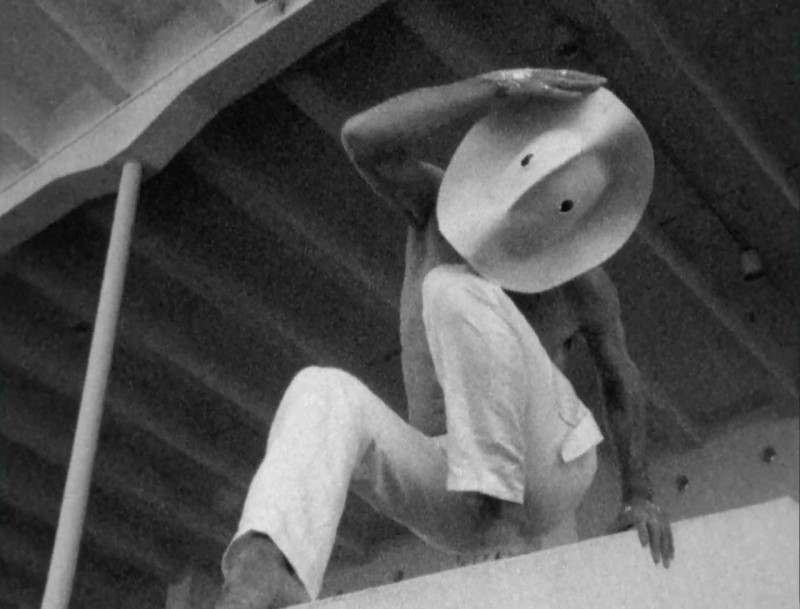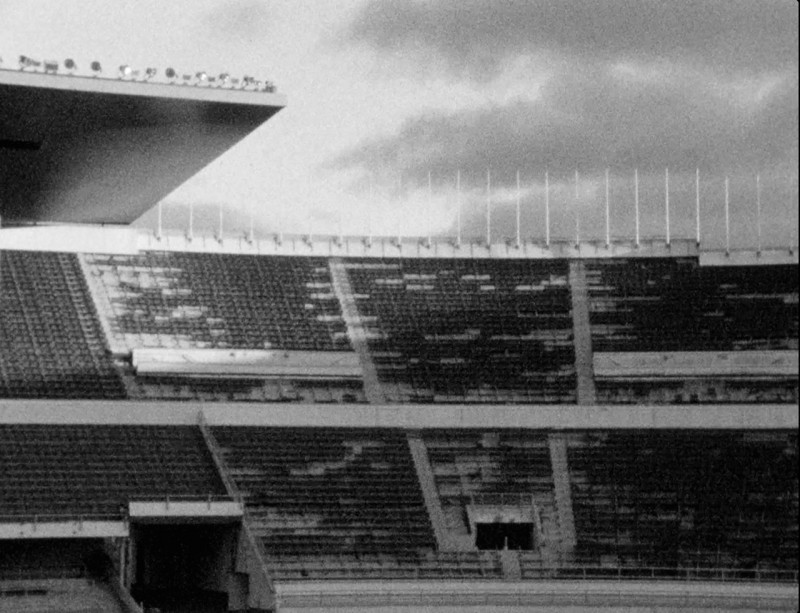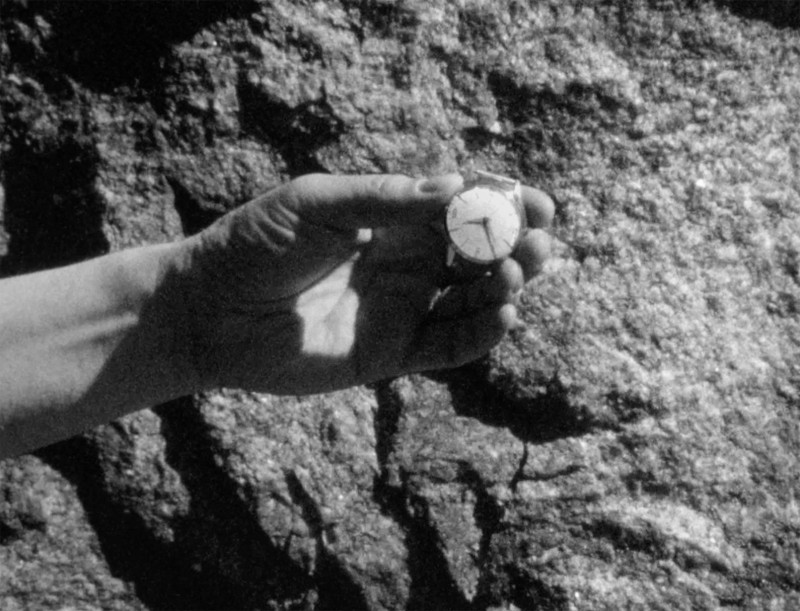Saara Ekström
Amplifier
* 1965 in Turku, FIN, lives and works in Turku, FIN
studied at the Turku Arts Academy, FIN, and the Northern Arizona University in Flagstaff, USA
Black-and-white, grainy, and static 8mm shots show the massive Olympic stadium in Helsinki, Finland, which was completed in 1938. The listed sports venue has been under reconstruction since 2016 and is to open again in 2019. The sound track, to which the title of the work refers, amplifies and distorts minute, hardly perceptible sounds to a soundscape that equals the image.
Ekström interweaves the shots of the functionalist architecture and the utopian idea of a structure from a bygone era with those of a masked dancer (Heikki Vienola) who with his body and movements explores the site. The rigid, lifeless architecture, the venue robbed of its function, the derelict shell of the stadium being renovated, with its cold, inorganic building material, is confronted by the lively, sublime body of the dancer. The work queries the relationship and interplay between man and thing, calmness and activity, past and future. The camera repeatedly focuses on traces that humans have left behind: the partially dismantled wooden bleachers, empty workplaces, smoothed spots on otherwise untreated rocks.
Ekström uses the analog camera as a medium of exploration to reflect on temporality, forgetting and remembering, but also deception and illusion. She has individual sequences played backward in the video, creates spatial illusions via split screen, and triggers associations through edits, for example, between close-ups of bullets and holes in the rocks on the stadium construction site. The playful dealing with reality is taken to extremes by filming little conjuring tricks: a key appears out of thin air; a fossil turns into a clock, into a rock; a Finnish medal decomposes to dust. The cold stadium structure is transformed into a surreal place charged with symbols. The scenario appears as a hybrid between dream and reality, reinforced by unmistakably clear sounds and the futuristically masked dancer, whose movements remind one of avant-garde character dance or non-Western dance styles. Behind this is also the question of our identity. What remains? What is our past, present, and future?
Alexandra Südkamp
Artist Statement
Perishing, temporality, and the stratification of time and history are themes that reoccur in my films and photographs. I am interested in the magnetism and anxiety surrounding a collapse, and of communicating through a narrative based on images, symbols and associations. Amplifier is a film about the Helsinki Olympic Stadium, which opened in 1938 to host Olympic games that never took place. It is also an observation of specific places significance as metaphors and condensations of a certain time and space – in this case a progressive era and blind utopian faith in the future, which catastrophically crashed into chaos. I rented a studio at the stadium and when the building was emptied for a major renovation, I filmed and stored the monumental structure as it was – exposed, bruised and saturated by time. In addition, I worked with a dancer and a magician who would scan the open quarries and broken rows of benches in search for signs of a forgotten past, as the renovation / destruction proceeded.
Saara Ekström


